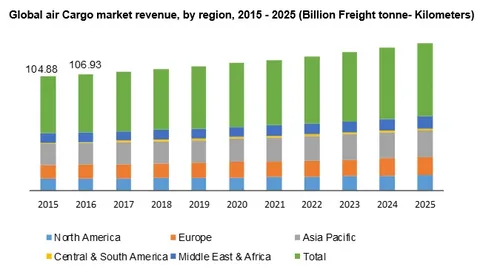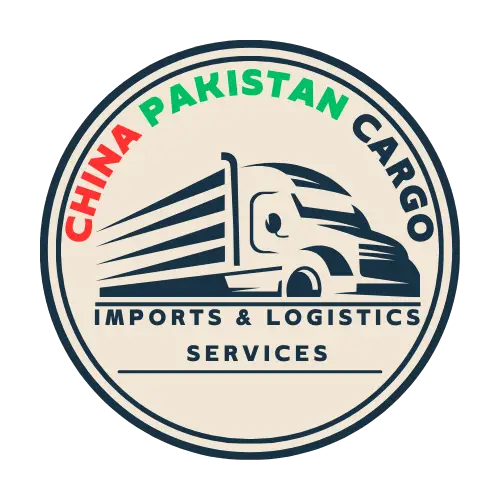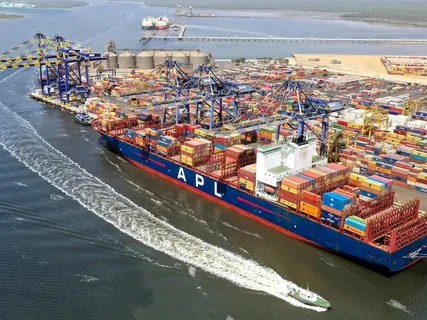Global airfreight cost increase is back in the headlines. Over the last three weeks, shippers have watched prices firm on key lanes as post-holiday demand returns, space tightens into winter schedules, and sellers prepare for Black Friday. Below we unpack the who/what/why behind this global airfreight cost increase, what it means for budgeting, and how to protect your margins on time-sensitive moves.

Across the latest weekly datasets, air cargo rates climbed in two successive weeks after Asia’s holiday lull. The China–US corridor rebounded significantly in week 42 and saw another rise in week 43, while China–Europe ticked up more modestly. Taken together, these signals confirm a multi-week rise in costs that many procurement teams are now feeling.
Why costs are rising now
Several overlapping forces are behind the latest global airfreight cost increase:
- Peak-season pull-forward: retail and e-commerce flows tighten space ahead of November sales, lifting air cargo rates.
- Winter schedules: the shift from summer to winter timetables reduces belly capacity and amplifies capacity constraints just as demand firms.
- Policy shocks: tariff changes and removal of de-minimis exemptions have reshaped flows and added volatility across the air freight market.
- Aircraft supply: widebody deliveries remain delayed while older freighters age out, keeping structural capacity constraints in play into 2026–2028.
- Weather & local disruptions: storms and holidays (e.g., China’s Golden Week, Diwali) temporarily suppress lift, then unleash catch-up surges that push air cargo rates higher.
Lane view: Asia–US vs Asia–Europe
The air freight market out of Asia Pacific is leading the latest moves. In week 43, China–US spot rates rose about +11% week-on-week to roughly $5.40/kg, South Korea–US jumped ~21% to ~$5.73/kg, Taiwan–US added ~5%, while China–Europe ticked up ~2% to ~$4.08/kg.
This pattern fits a classic peak-season global airfreight cost increase: express and high-tech flows chase speed to the US, and European lanes follow with smaller steps as exporters spread bookings to manage capacity constraints.
For Pakistan-bound importers, these dynamics matter even if you don’t ship trans-Pacific. Rates from South China and Hong Kong can ripple into South Asia via capacity sharing, so planning buffers is essential when prices start to firm.
| Route | Week-on-Week Change | Average Spot Rate (USD/kg) | Key Notes |
|---|
| China → US | +11% | $5.40/kg | Strong demand for express and tech goods; limited capacity pushing up rates |
| South Korea → US | +21% | $5.73/kg | Fastest growth among Asia–US lanes; driven by electronics exports |
| Taiwan → US | +5% | $5.10/kg (approx.) | Moderate increase as shippers secure space for peak season |
| China → Europe | +2% | $4.08/kg | Slower growth; European lanes following US trends with smaller adjustments |
What this means for China–Pakistan lanes
At Chinapakistancargo.com, we keep China to Pakistan shipping stable by locking allocations, building flexible routings (e.g., Shenzhen/Guangzhou or Shanghai via Middle East hubs), and consolidating SKU mixes. When a global airfreight cost increase is underway, these steps help you control landed cost:
- Book 7–10 days earlier: early space commitments reduce exposure when air cargo rates jump.
- Optimize dimensional weight: redesign inner packs to cut chargeable kilos across the air freight market.
- Use time-definite selectively: reserve it for SKUs where speed beats carrying cost during capacity constraints.
- Keep a standby ocean+air plan: hybrid routings can blunt spikes while keeping China to Pakistan shipping timelines intact.
- Leverage cross-docks: smart consolidation in Shenzhen or Hong Kong keeps China to Pakistan shipping predictable even in a squeeze.
Action plan: Quick steps for the next 30 days
- Forecast weekly, not monthly during a global airfreight cost increase—slot your POs into runway-aligned waves.
- Share carton sizes & pick-and-pack with your forwarder; better data lowers air cargo rates via smarter consolidations.
- Diversify uplift: pair primary gateways with alternates so the air freight market doesn’t trap you behind one hub.
- Pre-clear paperwork: avoid rollovers caused by compliance delays when capacity constraints bite.
- For China to Pakistan shipping, align promos with secured uplift windows; match marketing to guaranteed space.
Why this matters
In today’s fast-moving global trade environment, a sudden surge in air cargo rates can erode margins, delay launches, and disrupt supply-chain rhythm. By recognizing that we are in a phase of global airfreight cost increase—and acting proactively—you set yourself ahead of the curve rather than reacting late.
Summary
The key takeaway: expect elevated price levels, shorter lead-time tolerances, and heightened value on flexibility. The global airfreight cost increase isn’t a one-off—it’s part of a seasonal shift combined with structural constraints. But with the right route, mode and partner mix (especially for China to Pakistan shipping), you can still hit your in-hand dates and protect costs.
Need a rate or routing now?
Tell us your origin, destination in Pakistan, cargo specs, and target in-hand date. We’ll translate the latest air cargo rates into landed-cost scenarios and reserve space for the SKUs that can’t miss.
Frequently Asked Questions
Why have global airfreight costs increased over the past three weeks?
The recent spike in airfreight costs is mainly due to a convergence of factors — supply chain disruptions, reduced aircraft capacity, and higher fuel and maintenance costs. For example, global airlines are facing billions in extra costs in 2025 due to supply chain bottlenecks.
Is the rise in airfreight prices uniform across all routes?
No — the increases vary by route. Some regions, especially Asia-Pacific and Middle East/South Asia corridors, are seeing double-digit rate hikes, while other corridors may be more stable.
How much have rates increased recently?
While exact figures vary by lane, recent reports show that average spot rates are up several percent month-on-month and even more year-on-year. For example, one index showed a 7% increase in March compared to the previous month.
What are the main drivers behind the cost increases?
The key drivers include:
- Limited capacity (aircraft and belly-cargo space) due to delayed deliveries and aging fleets.
- Surge in demand, especially from e-commerce and companies shifting from sea to air due to ocean bottlenecks.
- Rising costs for fuel, maintenance and spare parts.
- Disruptions in sea freight or other routes pushing more cargo into airfreight lanes, reducing spare capacity.
How long might these elevated rates last?
It’s difficult to predict precisely, but many analysts believe the pressure will persist until capacity gaps are closed and the supply-demand imbalance improves. Without significant new capacity or relief in demand, rates may remain elevated for some weeks or months.
What can shippers do to mitigate the rising airfreight costs?
Booking air freight early before rates jump further
- Considering alternative modes of transport (sea, rail) when time allows
- Consolidating cargo to maximise load efficiency
- Negotiating contracts rather than relying purely on spot rates
- Staying informed of demand trends and capacity changes
Does this cost increase affect only large shipments or small parcel shipments too?
It affects all types of shipments — from standard parcels to full cargo loads. Even “basic” airfreight items are commanding higher rates due to constrained capacity and higher operational costs.
Should importers expect extra surcharges beyond the freight rate?
A8: Yes — in many cases surcharges (for fuel, congestion, change in route, handling) are rising alongside base rates. Importers should ask for full breakdowns and transparent pricing to avoid surprises.

